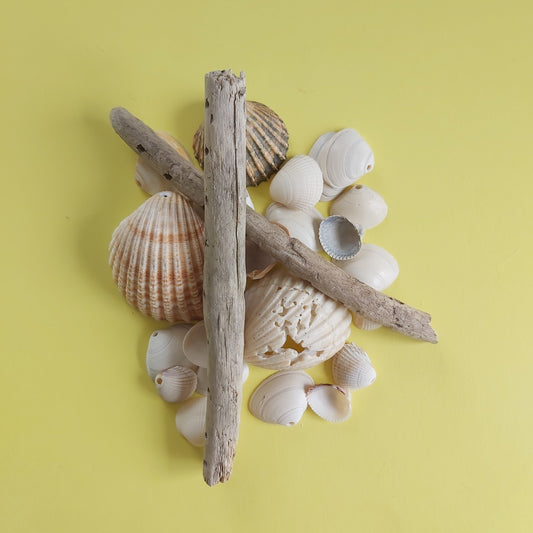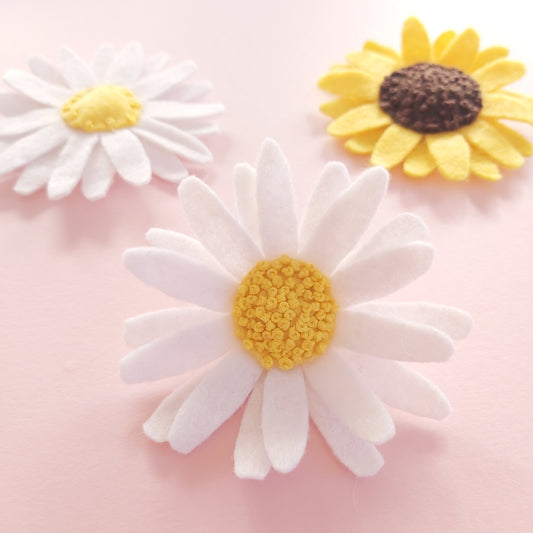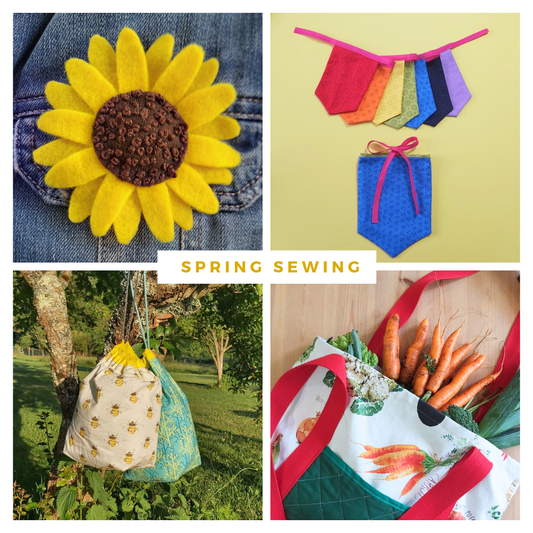What is bias binding and why make it?
So bias binding is a strip of fabric cut on a 45° angle to the grain so that when sewing, the binding can stretch to curve around corners if needed. The binding creates a nice edge finish to many sewing projects.
We often bind the armhole of garments like this example below.

You can buy bias binding in the shops or online but when you want to match your binding to your fabrics, this is when you will most likely need to make your own.
There are 4 key steps to making bias binding.
Here’s how to get started:
1. CUT
If you can get your hands on a patchwork ruler or protractor that shows you a 45° angle this will make the whole process easier.

Cut your fabric into a square keeping some selvedge if possible as this helps you find the straight grain. (selvedge is the funny edge strip along all fabric that usually has writing or colour codes and will show you the true straight of a fabric when it was manufactured/woven)
Fold your fabric in half on the cross (45° degree angle to the straight grain)

Measure and mark by using a ruler as a guide for marking or cutting directly with a rotary cutter. If using a rotary cutter you will also need a self healing mat to protect your surface.

The width measurement of your binding strips may differ from project to project but a standard size to cut is 35mm (1.5″) wide that will fold into a finished 25mm (1″) width, which will then fold in half again as it binds the edge of your project.
Cut and continue until you have enough length for your project.

(If your first cut is on the folded edge, this piece will be double wide and will need to be cut in half long ways.)

2. JOIN
Step 2 is to join short lengths of bias binding together to make longer pieces. Cutting on the bias can use a lot of fabric and leave you with weird shaped off cuts, so making smaller lengths and joining them together to make long strips is advisable.
This looks harder than it is and once you get the hang of the technique this will be very handy for future projects.

Lay bias ends right sides together, sew across indent to indent.
Trim seam wastage
Be mindful of pattern and print when joining 2 pieces together

Press your join with seam allowance open.

3. PRE-FOLD
As the word binding would suggest you will use the bias strip to edge and bind the raw edges of garments, cushions and quilts. When making your own bias binding the strip will need to be folded ready to sew.

You can buy a handy little ‘Bias tape maker‘ to help with this step that can help you do this accurately or you can do it carefully with an iron.

Double folding provides a helpful guide when sewing.
Press open/ in half or double open fold as above
4. SEW
Attach binding by using folded guide

You can also turn your bias strips into piping.

Making your own piping is very handy when sewing cushions and upholstery where you want to choose a patterned fabric or matching/contrasting colours. See my Cheeky Monkey Bolster project. To make piping you will also need some piping cord of various thicknesses.

I hope that this tutorial was helpful. I would love to hear your comments if you have had success. Share your projects with me on Insta @frecklesandcocraft
Happy sewing
Linzi x





1 comment
Love your website and tips. Need fabric for making piping for love seat and don’t know how much to purchase. Approximately how many feet/yards of bias cutting from 1 yard of fabric?
Have not yet found a local upholstery shop; just gathering the parts. I have 14 yards for fabric, want contrasting piping.
Any help most appreciated!